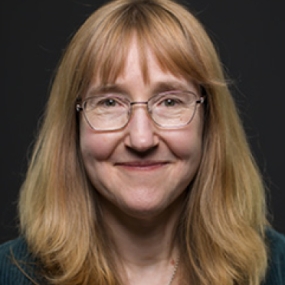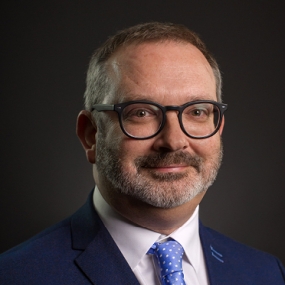

It has been a busy year for the Training Team and Training Committee at the College. We have been working hard, alongside the schools of anaesthesia across the four nations, to help support all those looking to progress their career in anaesthesia.
We wanted to take a moment to give you an overview of the work being delivered to ensure that all aspects of training are rigorous and fit for purpose.
We are incredibly grateful to all those who give their time and efforts to help support training, both within the College and within the schools of anaesthesia.
So what have we been up to?
Recruitment
We remain a popular specialty; numbers applying for CT1 posts in anaesthetics continue to rise. At ST4 we have been working to reduce the bottleneck following COVID-19 and the curriculum transition. At its worst, back in August 2021, there was a competition ratio of 1 to 2.6 with around 700 applicants missing out on posts. In the last round (February 2024) the competition ratio is down to pre-pandemic levels at 1 to 1.6. There is still work to do.
To reduce the bottleneck we have worked with NHSE WTE (HEE) to ensure the continued provision of additional posts. So far, in the last three years, we have seen an extra 70 posts per year coming on stream. This will represent a recurring 15% increase in our ST4 numbers.
While we are pleased with the increase in posts, their geographical allocation has not been within our control. In some cases, their allocation has exceeded training capacity in some regions. To help rectify this, the College has undertaken a training capacity assessment with the schools of anaesthesia and is working with NHSE to ensure that in any future expansion of posts they are placed in areas with the capacity to expand training.
In addition, we have looked at innovative ways to free up more ST4 posts from within existing programmes. Guidance for training programme directors has been written to help them to maximise the use of slot-shares and recruitment into empty posts. We hope that this guidance will support programmes in supporting LTFT training and increase capacity. This guidance is now being shared and adopted across specialties and in all UK nations. All of the above will remain a focus of the Training Committee’s work to help maximise the availability of training places over the coming years.
Flexibility in training
We continue to stress the importance of flexibility within training to enable all anaesthetists in training to progress through their programme at an appropriate rate. We have enabled schools to recognise up to 12 months of prior learning (in addition to CT3 top up) for doctors who are now in an approved training post. This experience must be at an equivalent to their stage of training and must be demonstrated through appropriate assessments within the LLP. This process is designed to support progression for the individual and will enable them to progress more rapidly towards CCT.
We continue to support those anaesthetists in training who choose to take time Out-of-Programme (OOP), be that for training, experience, research or a pause/career break. In addition, we have produced guidance in support of all trainees having access to Educational Development Time (EDT) in support of the work required to achieve the Generic Profession Capabilities outlined in the 2021 curriculum.
Differential attainment
One aspect that had been highlighted by both the review of the FRCA and recent GMC data is that of differential attainment. In response, the Training Committee has created a differential attainment working group which has produced a series of masterclasses based on the work published by the Royal College of Psychiatrists. This demonstrated that targeted online exam preparation by experienced trainers/examiners, focusing on technique rather than knowledge, is highly effective at reducing the attainment gap. This has been underpinned through research conducted by our own education fellows Paul Wilson and Nick Bishop. To date we have delivered two courses, with the third planned for March. While currently a pilot, the ultimate goal is to develop learning resources available to all schools of anaesthesia.
CESR programmes
There has been an increase in CESR programmes over the last three years. These programmes have been providing an alternative ‘training programme’ to enable anaesthetists to progress onto the Specialist Register.
The College has produced a registration process to provide support to the programmes, share best practice, and provide quality assurance to doctors who join them. We hope the registration process will help ensure doctors get access to an equitable and high-quality training, while also enabling those running the CESR programme to have admin access to the LLP.
Rotational training
The recent EGM has challenged the College to look again at rotational training. To this end, the Training Committee has brought together a working party including heads of schools, regional advisors, training programmes directors and trainees representing both the College and the Association of Anaesthetists. We have consulted with the regional trainee representatives, the clinical leaders’ network and regional advisors, and are putting together general principles that schools can apply to minimise rotations in each stage of training and in line with the 2021 curriculum. We will be taking on more work in this area to facilitate best-practice approaches to the delivery of the training programme, and will be looking to showcase and share case-studies of good practice.
Start as we mean to go on
While we are still in the early stages of 2024, our work with NHSE and other stakeholders has continued in a meeting where we pushed the need for further expansion of the anaesthetic training places. In our meeting we provided new ideas and options for NHSE to consider how expansion could be achieved with little disruption and meeting future demand of patients. We plan to have further meetings to progress these proposals.
All in all we are working to ensure that our varied and ever-changing workforce are supported and their educational needs met. If you have any feedback, questions or concerns, or wish to get involved in any of the workstreams described above, please contact sthornton@rcoa.ac.uk or jchambers@rcoa.ac.uk.

